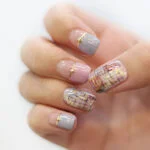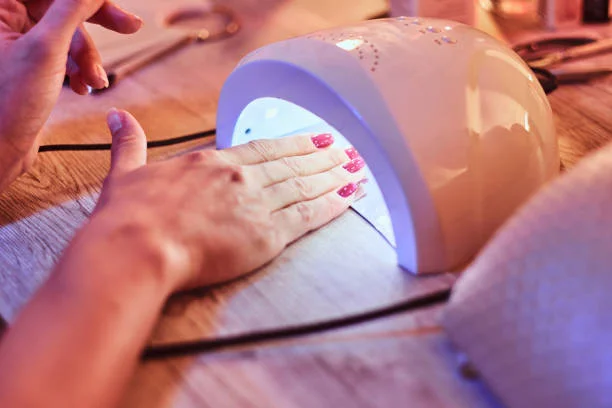Online vs. In-Person Nail Art Courses: A Comprehensive Comparison
Cost-effectiveness is a significant benefit of online courses. Instructors might charge less without space or materials. Students also save on in-person course travel and lodging. Students can share their work, seek feedback, and interact with other nail art enthusiasts in online learning platforms’ community forums, building a sense of community despite the distance.
However, online courses have drawbacks. Beginners unfamiliar with nail art materials and methods may need hands-on instruction. Feedback on students’ work is sometimes delayed, and the impersonality of Internet communication makes correcting mistakes or understanding intricate approaches hard.
However, in-person nail art classes are more traditional. These classes give students rapid hands-on practice and instructor feedback, which helps them learn brutal nail art methods.
In-person learning allows for networking, which is vital in beauty. Students can network with teachers and classmates for job possibilities, partnerships, and mentorships. In addition, many in-person courses address nail art techniques, hygiene, customer service, and company management, preparing students for manicure studio or salon jobs.
However, in-person classes have their challenges. They cost more than online courses because they require a physical venue and materials. The regular schedule of in-person classes may only suit some, especially those with other obligations. Geographical limits impede excellent education, especially in locations without nail art schools or workshops.

When choosing between online and in-person nail art classes, consider your learning style, lifestyle, and career ambitions. Online courses suit you if you want flexibility and self-directed learning. These classes are ideal for individuals with basic nail art skills who wish to learn more at their speed.
In contrast, in-person classes may be better for structured learners who like hands-on learning with quick feedback. Beginners who need help with nail art would benefit from these courses. They are also ideal for those looking to network and learn more about the nail industry than just nail painting.
In conclusion, online and in-person nail art courses offer pros and cons. Individual needs, interests, and circumstances determine the option. By carefully considering these variables, aspiring nail artists can choose the finest educational path to perfect nail design. Success in the ever-changing field of nail art requires effort, practice, and a never-ending desire for originality and invention.
Understanding Nail Art Certifications: Online vs. In-Person Courses
Making career-changing decisions is part of being a famous nail artist. Choosing the correct certification program is crucial. Formal training is essential in a field where the nail studio is both a workspace and a display. With the advent of digital education, prospective nail artists must choose between in-person and online training. This comparison of online and in-person nail art certifications aims to help nail art entrepreneurs.
Nail art requires knowledge of skills, hygiene, customer service, and, increasingly, digital branding. Nail art certifications give people the abilities and a credential that can boost their credibility with clients and companies. The channel via which one pursues these certificates can significantly affect the learning experience and value.
Online nail art certification classes are popular due to their flexibility and accessibility. They serve everyone from novices wanting to try nail art to seasoned professionals wishing to learn the current trends. Digital learning lets students work at their own pace, which is helpful for busy people. Online platforms can connect nail artists worldwide, enabling idea sharing and style exploration.
Online courses are appealing for their variety. The internet contains nail care and design information, from 3D nail art and airbrushing to extensive classes. Many of these courses are taught by industry specialists who might help aspiring nail artists. Cost-effectiveness makes online courses appealing to budget-conscious students.
Although beneficial, online nail art certificates have drawbacks. Lack of hands-on experience and fast feedback might be problematic. Nail art is tactile; thus, video presentations might make it hard to understand certain materials and tools. Online learning’s self-paced nature needs self-motivation, which may only suit some learning styles.
However, in-person nail art certification courses are more immersive. They offer hands-on practice with expert instructors. Direct feedback and individualized suggestions help trainees improve their techniques and correct problems in real-time. The framework of a physical classroom promotes discipline and can help some students study.
In-person courses teach salon administration, customer service, and health and safety, essential for nail studio owners and operators. During the course, working with various clients can provide essential real-world experience.
Attending classes in person helps students create a network of peers and mentors. These relationships can help you locate jobs, overcome industry obstacles, and keep up with trends. Nail artists’ portfolios might also benefit from reputable certifications.
However, in-person classes have their challenges. The increased cost, fixed schedule, and possible travel to the course venue may make this alternative less accessible. Local courses may also limit students to local styles and practices.

When choosing between online and in-person nail art certificates, consider learning interests, career ambitions, and logistical constraints. In-person courses are worth it for structured learners who appreciate hands-on learning and networking. They offer comprehensive training and a path to nail art careers.
Online courses are ideal for those who want flexibility, various content, and international trends and methodologies. They allow students to customize their education to their interests and speed, balancing studies with other obligations.
In conclusion, one’s learning style, professional goals, and practical circumstances should guide the choice between online and in-person nail art certifications. No matter the path, nail art achievement requires dedication, practice, and a need for knowledge. Nail artists must choose certification because the industry and their abilities and techniques change.









Leave a Reply